Gaining muscle and strength is like eating beer nuts.
After your first bite you just can’t stop.
It’s addictive.
No matter how much progress you’ve made, it makes you hungry for more.
But do you ever get the feeling that the people who are stronger than you, barely work harder?
Which usually means that they shouldn’t make more progress than you.
And maybe that’s why you keep looking for that next ‘secret’ exercise tip from them that will make you just as strong.
The thing is, sometimes you need to go back to the basics to find what really matters – high quality nutrition, not the next exercise or the next skill.
When it comes to training and nutrition almost everyone agrees that ‘consuming plenty’ of protein is a cornerstone.
You cannot build something without the right building blocks and protein provides you with the raw resources to do so.
Below you’ll find:
- how much grams of protein you need;
- a simple tool to track your protein intake;
- 11 high quality protein sources;
- and a tasty high protein meal which you can instantly add to your diet for more muscle, less fat and faster recovery.
How Much Protein Should You Consume?
While you might have come across dozens of diets which either demonise carbs or fats, very few hate on protein.
There probably are some out there, but the majority of dietary advice does not exclude protein as a source.
Muscles are largely made of protein.
Guess what happens when you train?
You break down those protein fibres.
To gain muscle essentially, your body will need to build more protein than it breaks down.
That’s because eating plenty of protein doesn’t just help with staying lean, it also provides the building blocks for protein synthesis or muscular reconstruction (1, 2).
So how much protein do you really need?
The institute of Medicine has set the recommended daily intake (RDI) of protein on 0,8 grams per kg of body weight for people aged 19 years and older.
Protein intake calculation: If you are 70 kilograms, this means your lower protein limit would be 70 kg x 0,8 grams of protein = 56 grams per day for that body weight.
The formula for the lower limit, basically is: your current bodyweight in kilograms x 0,8 grams of protein = required amount per day.
This standard accounts for 97,5% of the entire population, which in this study accounted for 225 participants (3).
If you are like most people, you probably think that you are part of that 2,5% of people that needs more than 0,8 grams of protein.
That might be the case.
Common protein recommendations range between 0,8 – 2,8 grams of protein per kilogram of body weight (4, 5, 6).
While multiple ‘scientists’ have tried to determine the perfect protein intake, most of them seem to reach a different conclusion.
But generally there is a point beyond which more doesn’t have any benefits.
The upper limit seems to differ significantly.
The lower limit seems to have a more clear cut off point (7).
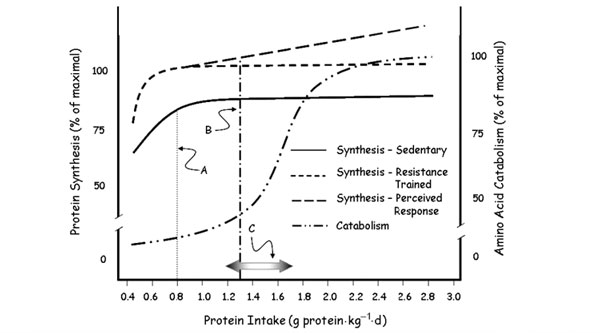
Below 0,8 grams per kilogram of body weight you can see a clear decline in the percentage of maximal protein synthesis.
This is shared by most researchers.
If you are in a caloric deficit, consuming higher amounts of protein, up to 2,8 grams per kilogram of body weight, might be necessary to mitigate negative factors related to diet such as: stress, dissatisfaction and fatigue (8).
Overall you should make sure to stay above the 0,8 gram border.
If you are below that threshold you are most likely not at 100% of your ‘protein synthesis’.
You are most likely breaking down more muscle than you are building, regardless of your caloric state.
With regard to the upper limit, I’m unable to give conclusive recommendations based upon available science.
This might be up to 2,8 grams, but this upper limit is related to mood and does not show extra strength gains compared to 1,6 grams (9) .
So the overall recommendations require more conclusive research by not just taking protein synthesis into account, but also other factors such a as: stress, fatigue, diet dissatisfaction etc.
When research isn’t conclusive I personally tend to follow advice from the people who are ahead of the curve.
One of these people is Menno Henselmans.
A well respected body recompositioning specialist and researcher who recommends slightly more than 1,6 grams for optimal protein synthesis.
As a buffer he recommends, 1,8 grams per kilogram of weight based upon his interpretation of research and his coaching experience with over more than a 1000 long term clients.
This is a real world example of a standard that has been working consistently for his clients and has also been working for me.
You might want to experiment with your upper limit, but more than 1,8 grams will most likely not lead to more strength gains.
A nice quality steak might end up giving you a better feeling however ;).
How To Get Enough Protein In Your Diet?
Clearly protein is important for you.
Whether you live a sedentary life or an active one.
But how can you make sure you consume plenty of protein?
Simple.
By tracking your intake.
There is a free app called myfitnesspal which you can use to track your nutrients and your calories.
You can just fill in the amounts of a certain food and the app automatically calculates the amount of protein.
At the end of the day you will have a total amount of protein, which allows you to see whether or not you’ve reached your requirements.
No gram of protein will be left behind.
11 Dietary Sources Of Protein Which You Can Use
All these source and their protein concentration are based upon 100 gram serving sizes.
So if the table shows 12.6 grams of protein, this is based upon measurements of 100 grams.
Don’t look at the daily value, because it’s not based upon your specific body weight and therefore doesn’t hold any relevance.
Ready to see the list?
1. Eggs
Eggs are considered amongst the healthiest foods on the planet.
The type of egg makes a HUGE difference of course.
Healthy eggs are loaded with minerals, healthy fats and muscle building protein.
Adding some scrambled eggs to your diet will provide you with an easy and cheap source of protein.
2. Almonds
One of the most popular and widely used nuts.
Containing plenty of important minerals such as magnesium, potassium and calcium.
They are a great addition to any fruit bowl and give a nice crunchy sensation.
Find my recovery fruit bowl recipe here.
3. Chicken Breast
Considered the most popular source of protein amongst body builders.
Easy to prepare, solid amounts of protein and tasty in combination with the right spices.
Find my crazy chicken curry recipe here.
4. Broccoli
An extremely healthy vegetable.
Broccoli is high in fiber, vitamin C, vitamin K and very high in protein compared to most vegetables.
A vegetable to add to your diet if you are looking for extra protein.
5. Grass-Fed Beef
Beef is a great high quality protein source.
You have to make a clear distinction between grass and grain-fed beef.
The nutritional composition as a result of different feeding strategies leads to a completely different profile of fats, minerals and vitamins.
Good beef is loaded with iron, B12 and choline which is a pre-cursor for a neurotransmitter associated with focus and mental energy.
6. Goat Milk
Contrary to regular milk goat milk is considered hypoallergenic which means it has very limited possibility of an allergic reaction.
Additionally it’s loaded with calcium and potassium and provides for a good amount of healthy fats and reasonable protein.
7. Sockeye Salmon
Sockeye Salmon is a one of a kind fish.
The reason for this is that it cannot be bread in captivity.
All the Sockeye you can buy, is wild caught.
This implies that the fish has had a diet rich in natural nutrition. Additionally the fish are caught at the end of they life cycle.
Which is the most ‘ethical’ way of fishing.
High in B-12, niacin and protein, not to mention the essential fatty acids which are key to a healthy vascular system and proper brain function.
8. Turkey Breast
Similar to chicken breast.
Easy to prepare and tasty in addition to being a good quality protein source.
9. Shrimp
Seafoods are generally high in essential omega-3 fatty acids.
Shrimp is one of those sources.
Loaded with Vitamin D, B12 and selenium in addition to providing you with plenty of protein.
10. Grass-Fed Milk
Once again it’s extremely important to make a distinction between processed milk and non-processed milk from healthy grass-fed cows.
While the former can even be considered toxic, the latter can be considered nutritious.
The type of food and quality of life from the animals providing the milk determines whether you should or should not consume it.
Good milk is high in calcium, magnesium, vitamin D and protein.
Unfortunately this milk generally isn’t commercially available.
11. Liver & Organ Meats
Out of all the protein sources, organ meats and specifically liver are the most nutritious meats know to man.
Extremely high in vitamins and minerals.
Vitamine A for example 634% of the daily recommended value.
Vitamin B12 even 1176% of daily recommended value.
Muscle meat does not even come close to the nutrient profile and the protein density.
Unfortunately organ meats have somehow become unpopular in developed countries.
Dietary Tip: You aren’t just what you eat, but also what you eat has eaten.
The nutritional value of all of these sources depends on how these individual protein sources have been bred, harvested or cultivated.
Beef from a grass-fed cow is not the same as beef from a grain-fed cow.
Just like the body composition of someone eating a healthy diet, isn’t the same as meat from someone eating McDonald’s.
For animal foods the same rules apply.
A healthy animal = healthy source of meat.
An unhealthy animal = unhealthy source of meat.
High Protein Green Super Shrimp Broccoli Recipe
This is a 15 minute recipe, that will provide you with about 50 grams of protein.
For the average male this would be around 30% of the daily intake.
You can also replace the shrimp with other types of protein, depending on your preference.
Ingredients
150 grams shrimp (organic)
150 grams of broccoli
1 teaspoon turmeric powder
Some black pepper
Some sea salt
100 grams of lettuce
50 grams of almonds
1 clove of garlic
1 tea spoon of coconut oil
1 teaspoon of olive oil (optionally)
How To Prepare Your Green Super Shrimp Broccoli
Heat the pan and add the coconut oil.
Add small slices of garlic or use a garlic press.
Add the shrimps and bake them until they turn pink, while doing so add a good amount of turmeric spice.
In the meantime slice up some broccoli into small pieces.
Add the broccoli to the shrimp and put it on a low fire to steam the broccoli.
Add some sea salt and black pepper.
Wait for 5-10 minutes until the broccoli is soft enough to eat, but still nice and crunchy.
Put some lettuce on your plate and add the shrimp and broccoli to it.
Top it off with some grinded almonds and spice depending on how it tastes.
Enjoy your meal and gains.
What If You Are A Vegan Or Vegetarian?
From personal experience, I’ve noted that vegans have an issue consuming plenty of protein.
While the strongest man in Germany is vegan.
This doesn’t say anything about an entire population.
There are similar examples of parkour runners who smoke cigarettes and drink diet coke and are stronger than 99% of the population.
This doesn’t mean smoking cigarettes and drinking diet coke constitutes to healthy nutrition.
Or should be recommended for a certain type of athlete.
Beans and legumes are commonly used as a replacement for protein.
The major vegan protein source – which is soy – has been strongly linked to detrimental health effects (10, 11, 12)
Preparation and cultivation once again plays a big role.
Fermented soy has been staple food in Asian cultures for centuries, but should not be confused with ‘commercialised soy products’.
Other beans and legumes can be consumed in moderation, but the amount of beans consumed by vegans to offset their lack of protein is sure to lead to a negative cascading effect.
This comes from the simple fact that, legumes and beans – including soy – have high amounts of anti-nutrients which bind to minerals.
These compounds decrease the absorption of those minerals, cause an inflammatory response and may even be poisoning in large amounts and without proper preparation (13, 14, 15).
Additionally, protein from plant based sources, although concentrated have very low bio-availability (16, 17).
This means they are absorbed poorly by the human digestive system.
Our digestive tract is simply unable to break down cellulose from plants.
Contrary to cows who need 4 stomachs to do so.
In practice this means that while you think you are consuming 100 grams of soy protein, in reality you only absorb a fraction of it.
As a vegan, getting some extra protein from nuts and seeds, might therefore be necessary, but will not be sufficient.
As a vegetarian, I would recommend consuming protein from goat milk or grass-fed beef milk in addition to eggs, nuts and seeds.
I have the utmost respect for any personal decision to exclude animal foods from your diet.
But you wouldn’t be here if your ancestors had to live of fruits and vegetables while consuming non-existent B12 supplements to offset the lack of this nutrient in their diet.
They ate healthy animal foods in addition to plant based foods.
In 1930 this researcher set out to discover what ‘a healthy diet consisted of’ by travelling the world and actually going to places instead of having people fill in a questionnaire.
These traditional tribes thrived on certain foods for thousands of years. While every tribe had it’s own unique sources, certain nutrients were essential in every society this unique researcher found.
Real empirical evidence, documented with pictures.
A nutritional goldmine to discover how traditional ‘human societies’ consumed their foods and what the effects of modern processed foods are on degenerative diseases.
Of which the causes until that point were unknown to modern man.
So How Can You Manage Your Protein Intake?
Get Enough Good Protein To Get More Out Of Your Training
Good news!
It took me quite a while to realize that ‘ample amounts’ of high quality protein can be the missing link.
Feel free to combine sources. Add some broccoli and almonds to your shrimp.
Chances are you’ll boost your overall results, more than just a few percentage points.
Ready to get addicted to your gains like those beer nuts?
Start consuming adequate amounts of good protein.
Beast mode ON!
PS. The nutritional data was collected from Nutrition Data.
Now I’d like to hear from you:
Did you like this post?
Or maybe you have a question.
Either way, make sure you get your download and leave a quick comment below right now.
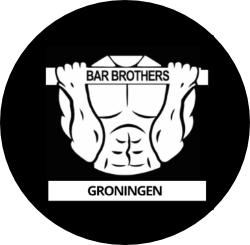
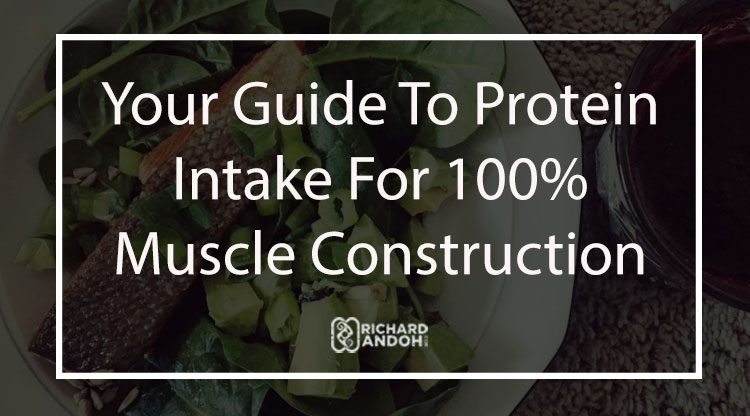
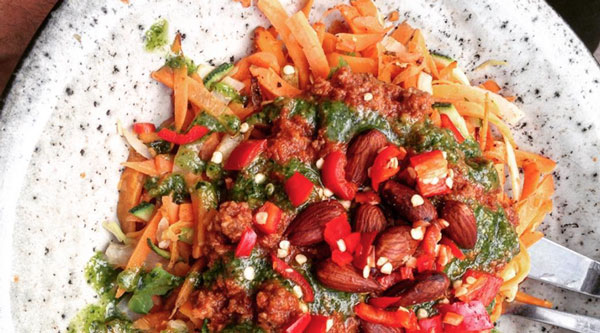
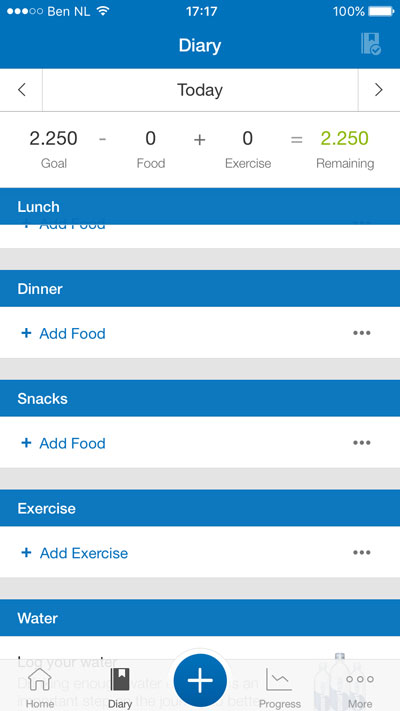











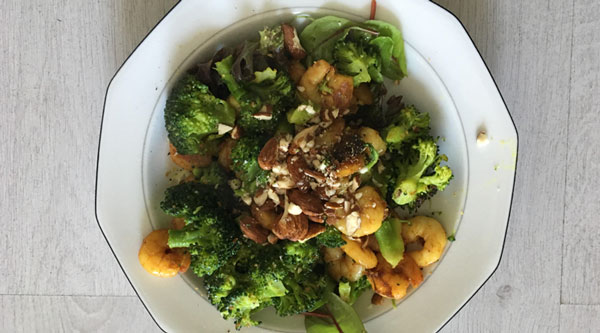
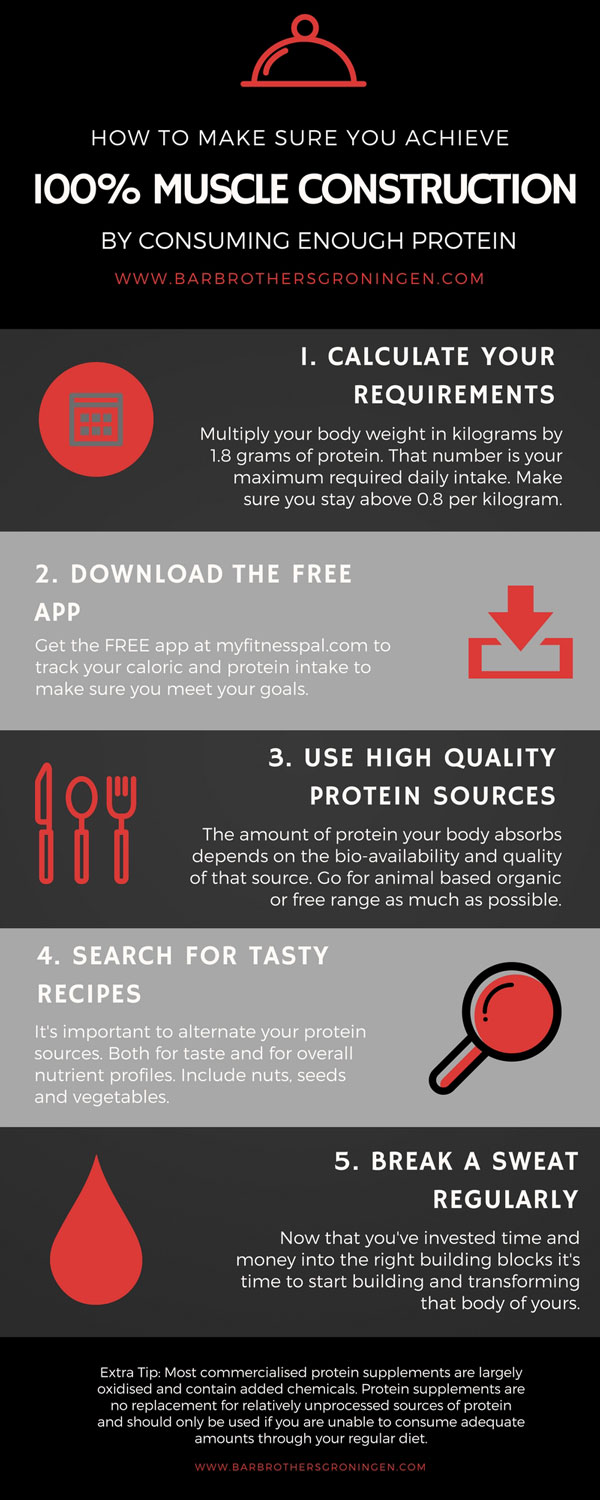
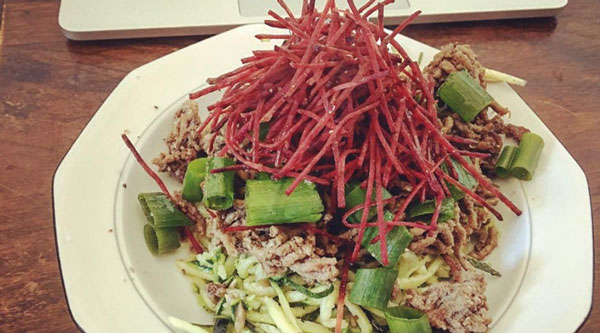
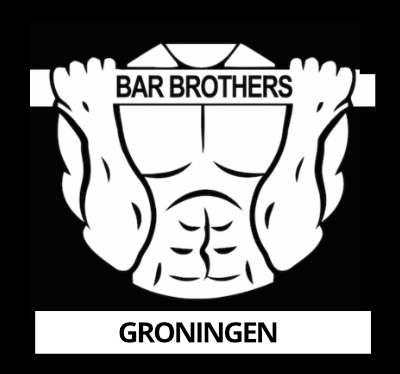
Hi Rich
I feel that there’s something missng, maybe because i almost left carbs behind, i don’t know which ones are recommended to start increasing lean muscle percentage in my body, and when I used myfitnesspal I’m not fulfilling my caloric state, so I don’t know what to do. The training has eventually helped me a lot, I’ve lost 5 kg in a month but I’m not becoming stronger.
Thank you so much man
Hey Juan,
Great stuff!
Carbs are not good or bad, it all depends on how much and why you consume them. Don’t get confused by all the bullshit out there. Primarily focus on whole foods, unprocessed carbs.
1. Prioritise protein first and foremost.
2. If you are not hitting your caloric intake, look for caloric dense foods. In your case, adding more carbs like white rice and potatoes can be a great option, unless you want to lose weight. Carbs are just easier to cut than other sources.
3. How long have you been training? Keep in mind that you are comparing yourself to people who have spent more than 10 years on training, this does not happen over night. If you want to dig for gold, keep digging ;).
4. Losing 5kg is a month is quite a lot, keep in mind that being in a big caloric deficit, especially if you are quite lean already can affect strength. If you want to recomposition your body you don’t want to get into a deficit of more than 500 calories daily and keep your protein intake at 2.0 grams per kilogram of body weight.
Hope this helps!
*Fist bump*
Love this article. When I opened it I thought “another article about protein requirements?” But somehow you managed to make this article informative and helpful despite the multiple times I have heard about protein requirements from other websites, books, podcast, etc. Thanks for the good work!
Hey Matt,
Thanks a ton for your comment!
It really means a lot.
Happy you enjoyed it.
*Fist bump*